In an era when security concerns are paramount, many parking lots are equipped with surveillance cameras to deter crime and ensure vehicle safety. However, not all parking facilities make their surveillance measures obvious, leaving many to wonder how they can ascertain the presence of cameras.
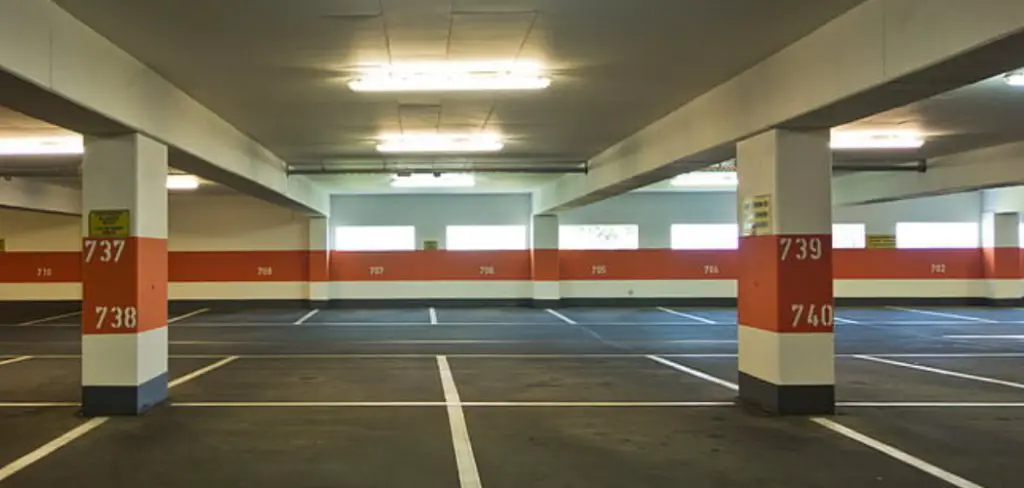
Identifying whether a parking lot is under surveillance requires a combination of observational skills and a basic understanding of camera types and their common placements. This introductive guide aims to arm you with the knowledge to spot surveillance cameras in parking lots, enhancing your sense of security when you park your vehicle.
Whether you’re concerned about the safety of your car or curious about the privacy implications, understanding how to tell if a parking lot has cameras is an invaluable skill in today’s surveillance-heavy society.
What are the Benefits of Having Cameras in Parking Lots?
There are several advantages to having surveillance cameras in parking lots. These include:
- Deterrent to Crime: The presence of cameras can deter criminals from targeting a particular parking lot, as they are less likely to commit a crime if they know they are being monitored.
- Evidence for Investigations: In the event that a crime does occur, surveillance footage from parking lot cameras can provide valuable evidence for police investigations.
- Insurance Purposes: Some insurance companies may offer lower premiums to vehicles parked in lots with surveillance cameras, as they are considered more secure.
- Peace of Mind: Having cameras in a parking lot can provide peace of mind for both drivers and lot owners/operators, as they know that any incidents or accidents can be captured on camera.
Types of Cameras Used in Parking Lots
There are several types of cameras that may be used in parking lots, each with its own distinct features and purposes. These include:
- Fixed/Stationary Cameras: These cameras are mounted in a fixed position and capture footage from a specific area of the parking lot.
- Pan-Tilt-Zoom (PTZ) Cameras: These cameras can be remotely controlled to pan, tilt, and zoom in on specific areas of the parking lot.
- License Plate Recognition (LPR) Cameras: Designed specifically for capturing license plate numbers, these cameras are often used for security and access control purposes in parking facilities.
- Infrared/Night Vision Cameras: These specialized cameras use infrared light to capture footage in low or no-light conditions.
Where are Cameras Commonly Placed in Parking Lots?
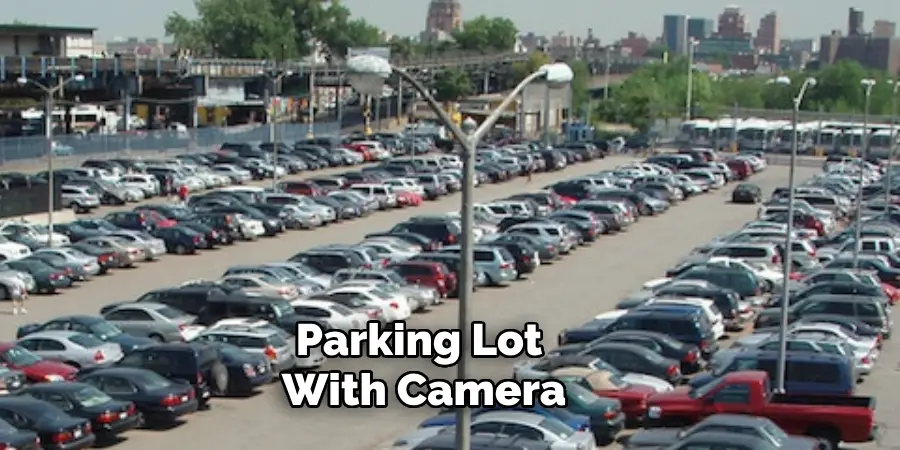
In order to effectively spot cameras in a parking lot, it’s important to know where they are commonly placed. Some common locations include:
- Entrances and Exits: These areas are often monitored by cameras for security purposes, capturing footage of vehicles entering and leaving the lot.
- Payment Kiosks/Toll Booths: Cameras may be placed at these locations to monitor transactions and deter theft or vandalism.
- In High-Risk Areas: Areas with higher rates of crime or accidents may have cameras installed for added security and evidence-gathering purposes.
- In Dark Corners/Areas with Poor Lighting: Cameras may be strategically placed in areas with poor lighting to capture clear footage of any incidents that may occur.
10 Easy Steps on How to Tell if a Parking Lot Has Cameras
Now that you know the types of cameras commonly used and where they may be placed, here are some tips for spotting them:
Step 1. Look Up:
The most straightforward approach to identifying if a parking lot is under surveillance is to simply look up. Cameras are often stationed high to provide a wide viewing angle. Check light poles, the corners of buildings, and any overhead structures like the entrance and exit points.
These locations are favored for their expansive coverage and reduced risk of tampering. Keep an eye out for small, dome-shaped objects or more conspicuous security cameras that are designed to be noticed as a deterrent.
Step 2. Check for Wires or Mounting Equipment:
Another effective method for spotting cameras in a parking lot is to look for wires or mounting brackets that are typically associated with surveillance equipment. Even if the camera itself is not immediately visible, the hardware used to support and power cameras can be a giveaway.
This can include visible wiring, mounting poles, or even the distinctive housings that protect outdoor cameras from the elements. Pay special attention to the perimeter of the parking area and any lighting fixtures, as these are common places for installing surveillance hardware.
Step 3. Search for Small, Unassuming Objects:

Security cameras come in various shapes and sizes, many of which are designed to be inconspicuous. When scanning a parking lot for cameras, keep an eye out for small, unassuming objects that could house a camera. This includes objects like birdhouses, light fixtures, or even fake rocks. Manufacturers often disguise cameras within these everyday items to make them blend seamlessly into the environment. This tactic not only helps in surveillance effectiveness by being less noticeable to those being monitored but also serves to keep the cameras safe from vandalism or tampering.
Step 4. Utilize Reflections:
One less obvious technique to identify surveillance cameras is to look for reflections, especially during the night or in dimly lit areas. The lenses of cameras can reflect light, making them easier to spot if you’re actively searching. Use any available light sources, such as your car’s headlights or a flashlight, to scan the area.
The reflective glint from a camera lens could reveal its location. This method requires more patience and a keen eye, but it can be particularly effective in discovering hidden or discreetly placed cameras that are monitoring the parking lot.
Step 5. Pay Attention to Signage:
Many parking lots will have signs indicating that the area is under surveillance. While this might seem like an obvious hint, it’s easy to overlook these signs when you’re not actively searching for them. Look for posted notices at the entrances, exits, and other prominent locations within the parking lot.
These signs might not only inform you about the presence of cameras but can also give clues about the areas that are specifically monitored. Recognizing these signs can save you time in your search for cameras and reinforce the idea that the area is being watched, thereby enhancing your overall sense of security while in the parking lot.
Step 6. Observe the Behaviour of Others:
Another useful strategy for detecting cameras is to watch how people behave as they move through the parking lot. People who frequent the area may unconsciously act differently if they know they are being watched.
For instance, you might notice individuals glancing upward towards cameras or altering their path to avoid certain areas known to be closely monitored. Observing these subtle cues can direct your attention to possible camera locations. Additionally, employees or security personnel might occasionally look towards or even check the cameras directly, providing further indication of their presence.
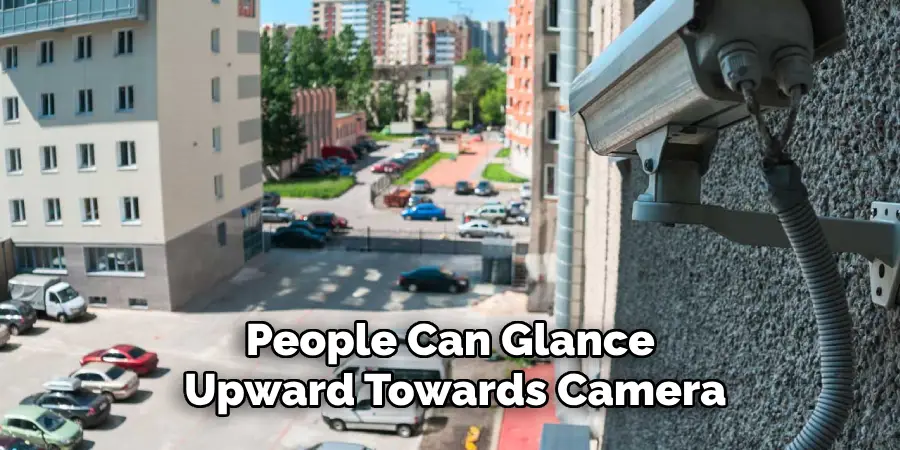
Step 7. Use a Mobile App:
In the digital age, there are mobile applications designed to help detect surveillance cameras in public spots, including parking lots. These apps can utilize the camera on your smartphone to identify the infrared lights that many surveillance cameras emit, which are invisible to the naked eye under normal conditions.
By activating these apps and scanning the area around you, your smartphone can alert you to the presence of an infrared light source, indicating a potential camera. While not foolproof, using a mobile app can be an effective tool in your quest to uncover hidden cameras, particularly those that are difficult to spot with the naked eye alone.
Step 8. Ask the Parking Lot Staff or Security:
If you’re still uncertain about the presence of surveillance cameras in a parking lot, don’t hesitate to contact the parking lot staff or security personnel directly. These individuals are often knowledgeable about the surveillance system in place and can provide you with accurate information regarding camera locations.
This approach not only clarifies any doubts you might have but also demonstrates your awareness and concern for security measures. Remember, it’s in the best interest of those managing the parking area to maintain a secure environment, so they’re generally open to discussing their security tactics with patrons.
Step 9. Consider the Use of Binoculars or a Telephoto Lens:
If you’re attempting to spot cameras from a considerable distance, binoculars or a camera equipped with a telephoto lens might be beneficial. This approach enables you to closely inspect areas that are too far away to see clearly with the naked eye, such as the tops of poles or distant corners of the parking lot.
Surveillance cameras often have distinctive shapes or forms, like small domes or boxes, which can be easier to identify when viewed up close. While employing this method, be mindful of privacy concerns and ensure that your actions are respectful and appropriate to the context.
Step 10. Review Recorded Footage:
If you have legitimate access to the parking lot’s security footage, reviewing recorded videos can be a definitive way to spot where cameras are located. This method allows you to observe the angles from which the parking lot is being monitored, thereby pinpointing camera positions. Watching the footage can reveal camera locations that might have been overlooked during a physical search.
Keep in mind that this approach requires permission from the property owners or managers, as accessing surveillance footage without authorization is illegal and constitutes a privacy violation. Employing this strategy with consent can provide comprehensive insights into the surveillance setup of the parking area.
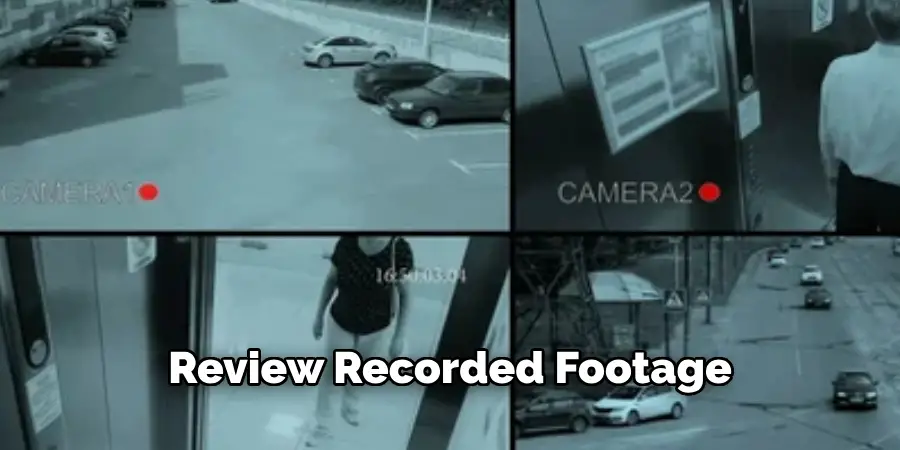
By following these ten steps, you can effectively identify surveillance cameras in parking lots and potentially increase your sense of security while using them.
5 Additional Tips and Tricks
- Look for Posts or Poles: Many parking lots install their cameras on high posts or poles to get a broad view. These structures often stand out and can easily be spotted from a distance.
- Check the Lighting: Areas with a high concentration of surveillance cameras often have better lighting to capture clearer footage during all hours. If a section of the parking lot is particularly well-lit, it might also be under surveillance.
- Observe the Entrance and Exit Points: Cameras are typically placed at the entrance and exit points of parking lots to capture footage of all vehicles coming in and going out. Pay special attention to these areas when mounting cameras.
- Look for Warning Signs: Some areas may have signs indicating the presence of surveillance cameras as a deterrent to criminal activity. These signs can be a clear indicator that cameras are being used in the vicinity.
- Ask the Facility’s Security or Management: If in doubt, one straightforward way to find out is by asking the parking lot’s security personnel or management office directly. They can provide you with information regarding the lot’s security measures, including the use of cameras.
With these additional tips and tricks, you can become even more confident in determining whether a parking lot has cameras or not.
5 Things You Should Avoid
- Don’t Assume Small Lots are Camera-Free: Size doesn’t dictate the presence of security measures. Even small parking lots can be under surveillance to deter theft or vandalism. Always be vigilant regardless of the lot’s size.
- Avoid Ignoring the Obvious: Sometimes, the most evident signs of surveillance, such as visible cameras or warning signs, are overlooked. Don’t dismiss these obvious indicators in search of more subtle clues.
- Don’t Rely Solely on Camera Domes: While dome cameras are common, they aren’t the only type of camera used in parking lots. Security measures have evolved, and cameras can now be hidden or disguised in various forms. Always keep an eye out for unusual objects or setups.
- Avoid Neglecting the Perimeter: Cameras aren’t placed only at the entrance or exits and can often be found along the perimeter of the lot. Focusing solely on the lot’s interior might lead you to miss cameras designed to monitor the outer edges.
- Don’t Forget to Check the Buildings: Cameras might not always be standalone or mounted on poles. Many are attached to adjacent buildings, providing a broad view of the parking lot. Look towards the buildings for any cameras pointing towards the parking area.
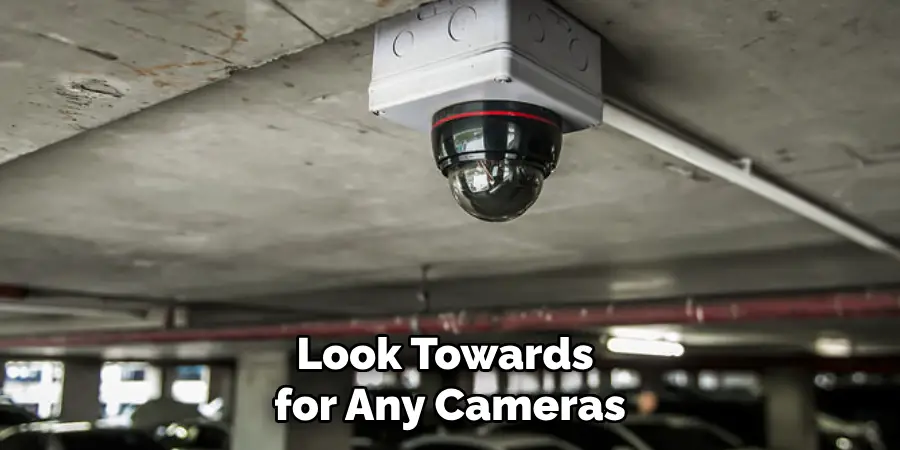
By avoiding these common pitfalls, you can enhance your awareness and ability to identify surveillance cameras in parking lots, ensuring better personal security and awareness of your surroundings.
Can You Tell if a Camera is Recording You?
Determining whether a camera is actively recording you or simply monitoring the area can be challenging. However, there are a few signs that may indicate a camera is in use:
- LED Light: Many cameras have an LED light that turns on when it’s recording. If you see a red or green light, it could indicate that the camera is actively capturing footage.
- Movement Tracking: Some cameras have movement tracking capabilities, meaning they will follow a person or object as it moves through the area. If you notice a camera moving to keep you in its line of sight, it could be actively recording.
- Sound Recording: While not always visible, some cameras also have audio recording capabilities. If you hear any sound coming from the camera, it could be recording.
- Looping Footage: Many cameras have a feature that allows them to continuously record over old footage once storage space is full. If you see footage on a screen or monitor that appears to be looping, it’s likely being actively recorded.
Overall, it can be challenging to tell if a camera is recording you, so it’s best to always assume that you are being recorded in public spaces. It’s essential to respect others’ privacy and follow any posted rules or regulations regarding the use of cameras in the area.
Can a CCTV Camera Work Without Red Light?
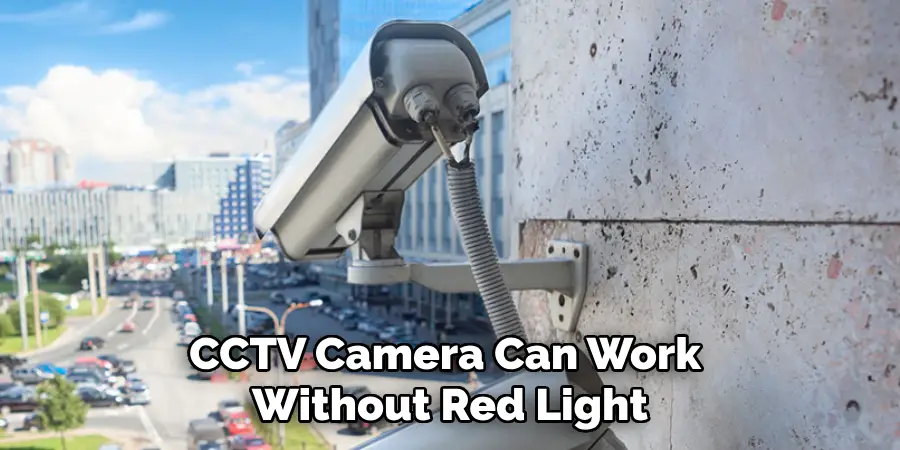
The use of a red light on CCTV cameras is not a requirement for them to function. The purpose of the red light is to indicate when the camera is actively recording, but it can be turned off or not present at all. In some cases, the presence of a red light may even deter potential criminals from committing illegal activities in the area where the camera is located.
However, it’s crucial to note that the lack of a red light does not mean the camera is not recording, and one should always assume they are being monitored in public spaces. Non-functioning or non-visible red lights can also be an indication of malfunctioning equipment, which could lead to important footage not being captured.
Therefore, if you notice a CCTV camera without a red light, it’s best to err on the side of caution and assume that it is still recording. In conclusion, the presence or absence of a red light on a CCTV camera does not affect its functionality, and one should always be mindful of their actions in public spaces.
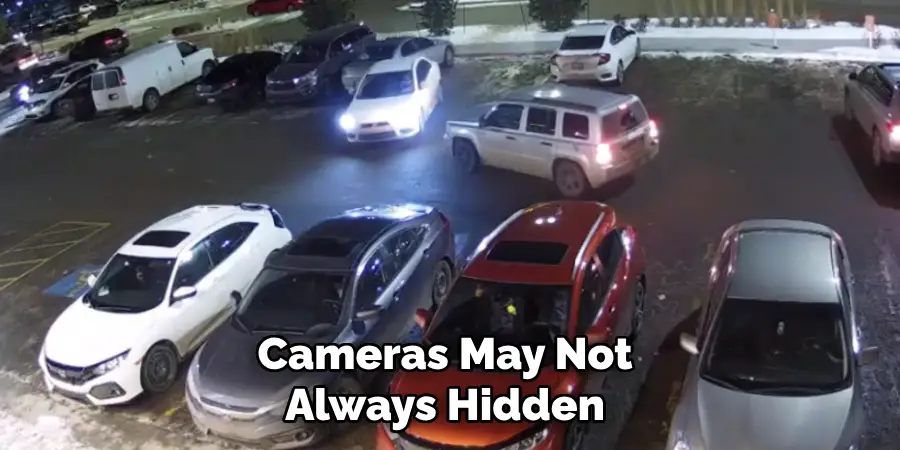
Conclusion
Determining the presence of cameras in a parking lot requires a combination of observation, awareness, and, sometimes, direct inquiry. By noting the presence of visible cameras, observing well-lit areas, checking entrance and exit points, looking for warning signs, and consulting with the facility’s security or management, individuals can gauge the level of surveillance within a parking lot.
However, it’s essential to remember that surveillance technologies and strategies are constantly evolving. Cameras may not always be overt and could be hidden or disguised. Therefore, for one’s peace of mind and security, it is prudent to always assume surveillance is in place and conduct oneself accordingly. By staying informed and vigilant, individuals can better protect their privacy and safety in public spaces.
Hopefully, this guide has provided valuable insights and tips on how to tell if a parking lot has cameras. Stay safe!

